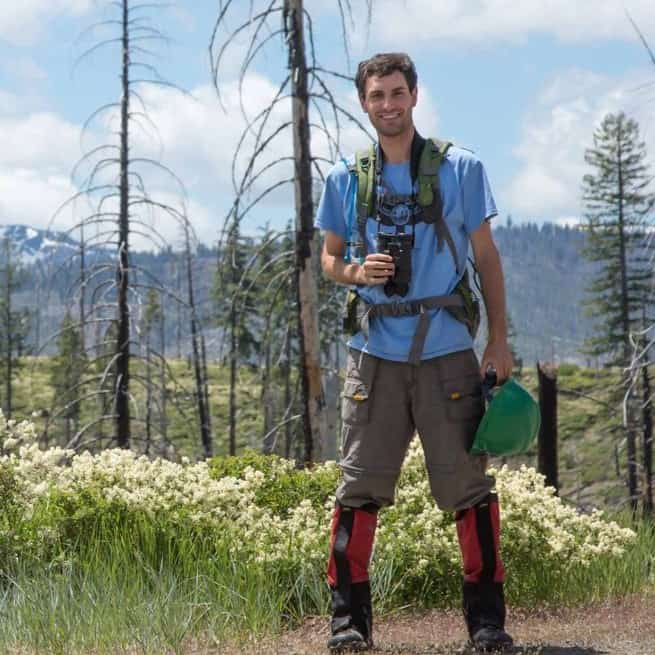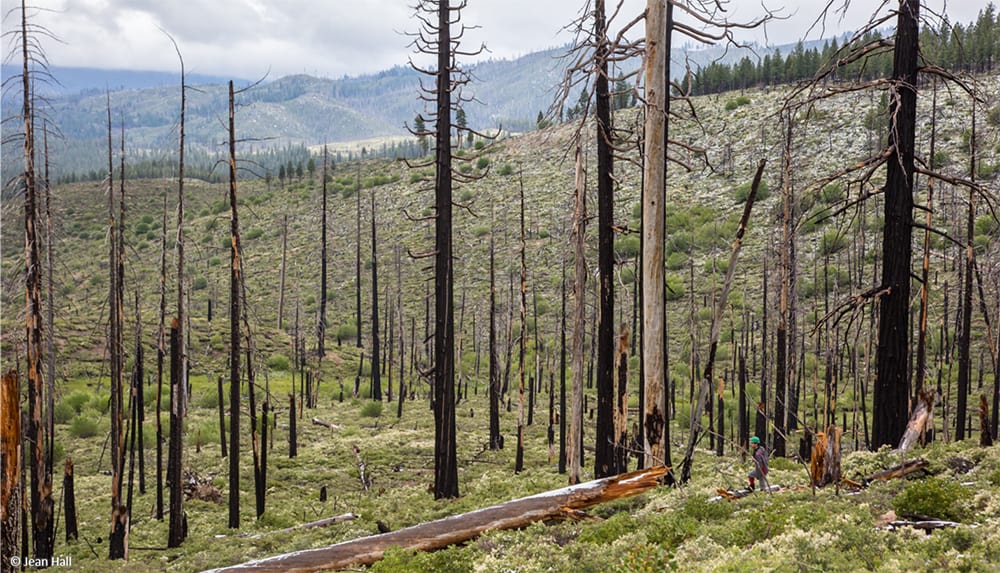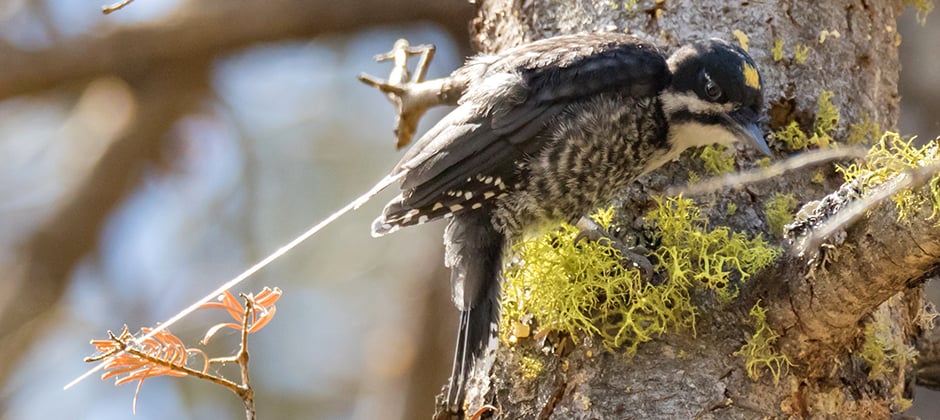Share this article
TWS2020: Young birds and fire study named top presentation
One species you won’t hear complaining about West Coast wildfires is the black-backed woodpecker. The species relies particularly on recently burned forests in the West, nesting in newly burned trees and feeding on beetle larvae.
“A forest of dead trees is actually a fantastic place to make a living if you’re a black-backed woodpecker,” said TWS member Andrew Stillman, a PhD candidate at the University of Connecticut.
But how do the woodpeckers find these newly burned areas? They can appear within two days of a fire, sometimes while the flames are still burning. Stillman’s presentation at TWS’ 2020 Virtual Conference on his work to answer that question received the Best Student Oral Presentation Award.
“One thing that has always surprised us is how quickly they show up after a fire burns,” Stillman said. “It’s almost like they know where they’re going.”
It’s an intriguing ecological question, but it’s also an important management one. After a fire, forest managers often remove dead trees in their efforts to restore the forest, Stillman said, but they look for the presence of black-backed woodpeckers (Picoides arcticus) to make sure they have left enough resources on the ground.
“The black-backed woodpecker is an indicator species for the health of recently burned forests,” Stillman said. “I know that sounds like an oxymoron, but a burned forest is a fragile ecosystem – it’s a valuable habitat on a trajectory to be restored into a forest with live trees once again.”

Researcher Andrew Stillman set out to determine how black-backed woodpeckers find newly-burned forests. Credit: Jean Hall
Since there’s no way to predict where a wildfire may occur, how do black-backed woodpeckers know where to go? To find out, Stillman and his team wanted to track the birds’ natal dispersal movements, but that proved tricky. The young woodpeckers don’t respond to territorial calls, so researchers couldn’t attract them to mist nets to capture and tag them. Net guns didn’t work, either. So they set out to tag nestlings just before they fledged. But how could they reach them? The nests can sit two stories high up a dead, fragile tree. Climbing wasn’t an option. Instead, they set an extension ladder on the ground, raised it straight up in the air, held it in place with climbing ropes and scaled it to tag the nestlings without ever touching the rickety trees.
Even after they tagged the birds, tracking them was tricky. The birds proved invisible to telemetry from the ground.
“We had to take to the air to find these birds,” Stillman said.
With the help of volunteer pilots from Lighthawk Conservation Flying, researchers attached telemetry antennas to the small aircraft and flew grid surveys across Northern California and central Washington to determine how these birds discover these unpredictable pulses of newly burned forests blinking on across the landscape.
They found that juveniles that hatched in older burned forests, where resources were diminishing, dispersed longer distances, and they were more likely to leave their natal fires compared to those in newer burns. While the median dispersal was over just over 18 kilometers, some flew as far as 51 kilometers in search of recent burns.
“We were surprised by how far this species was capable of dispersing, even during their first year of life,” Stillman said.
The team’s simulations suggested that the woodpeckers use this long-distance dispersal to quickly colonize newly burned areas in search of resources.

Andrew Stillman looks for dispersing black-backed woodpeckers in a burned forest. Credit: Jean Hall
“They’re responding to environmental cues like availability of food and habitat,” Stillman said. “If the fire where they are living isn’t great quality, it seems like they are more likely to disperse.” Whether they target these new areas using some sort of sense faculties or they just stop flying once they find areas with plenty of food isn’t clear, he said.
The behavior offers a glimpse at how species that rely on temporary conditions find the resources they need, Stillman said, but it also offers lessons about fire management. Ironically, the megafires that are reshaping western forests aren’t good for the black-backed woodpecker in the long run, he said. His research has found the bird prefers a mosaic with more variation in burn severity.
“I think that can teach us about what the historical fire regime might have looked like in California,” he said, “and it teaches us a little bit about our targets for how we might manage fires in the future.”
This research was presented at TWS’ 2020 Virtual Conference. Conference attendees can continue to visit the virtual conference and watch Stillman’s presentation for six months following the live event. Click here to learn about how to take part in upcoming conferences.
Header Image: Researchers tagged this fledgling black-backed woodpecker to track natal dispersal. Credit: Jean Hall








